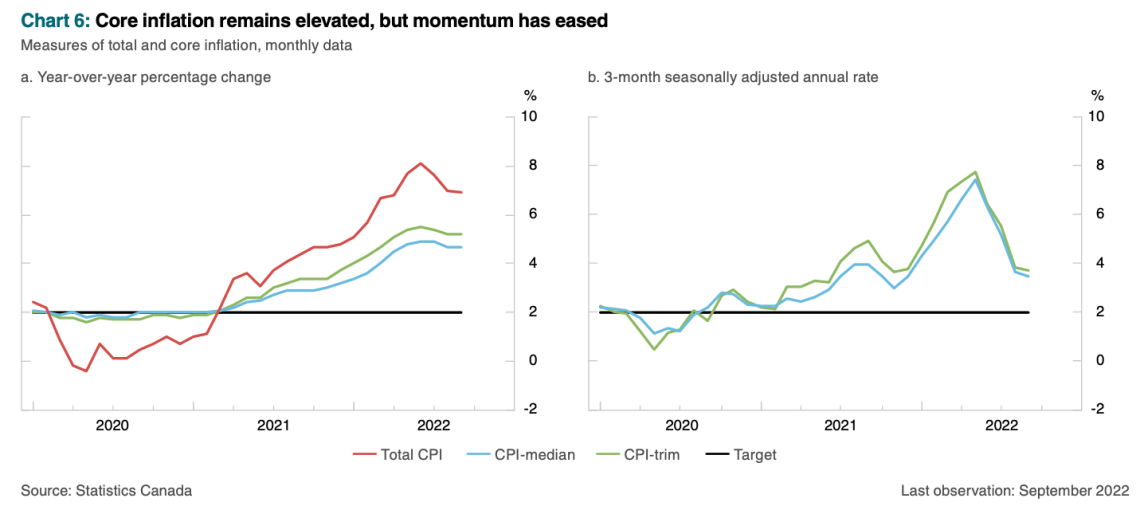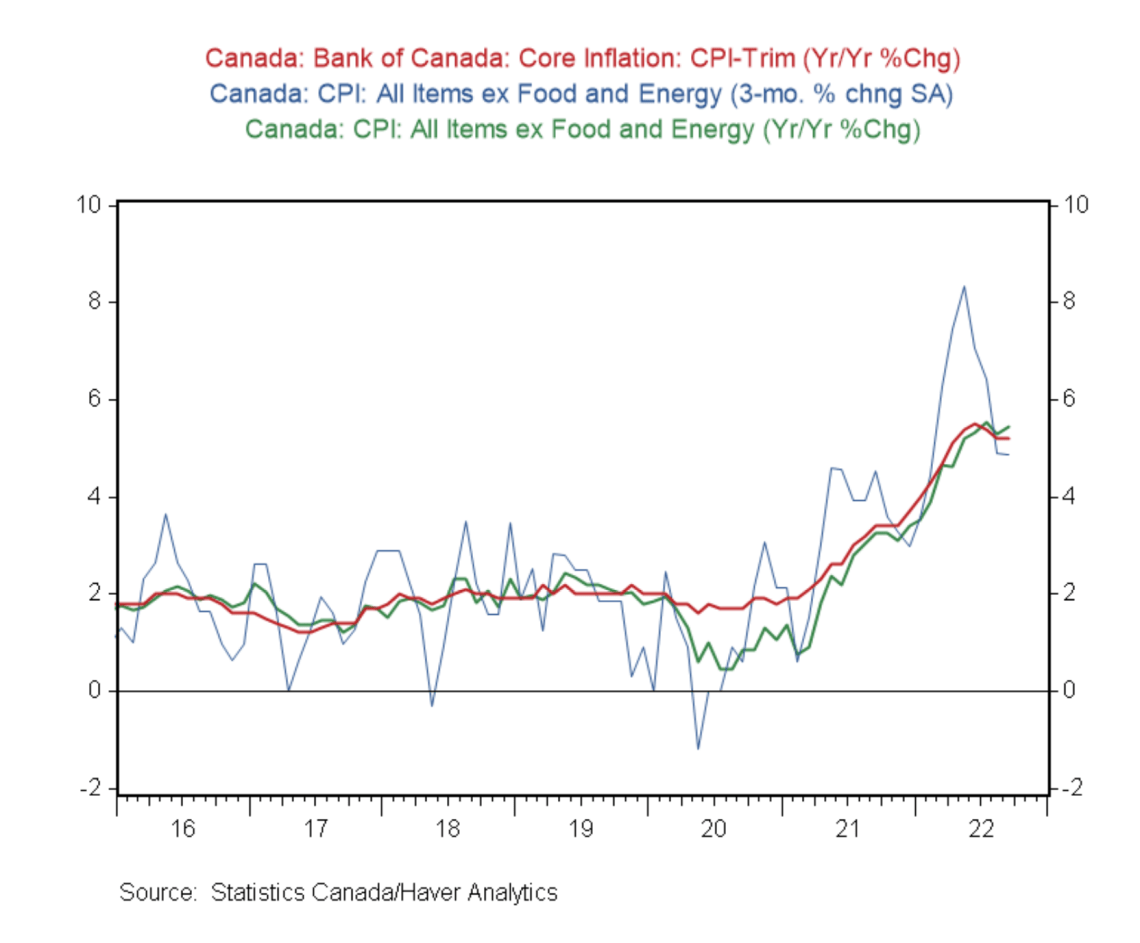Canada’s oldest bank would like a little more clarity from the country’s central bank, going forward. BMO Economics wrote to investors this week, arguing the Bank of Canada (BoC) needs to be more transparent about their inflation data. After delivering a smaller-than-expected rate hike, the BoC presented a chart to justify its move. The data presented isn’t a regular measure used by markets, and BMO had trouble recreating it. In the future, BMO is requesting more regular releases of this non-traditional measure, since it has a significant impact on the market.
Bank of Canada’s Smaller Than Expected Rate Hikes
The BoC rate announcement surprised many, coming in nearly a third lower than the market had priced in. Last Wednesday, the overnight rate was hiked 50 basis points (bps), despite the bond market expecting a 75 bps move. The smaller-than-expected move came with mixed reads of core inflation.
Most of the time when you hear discussions of inflation, you’re hearing the “headline” number. Core inflation strips out volatile components like food & energy, which humans don’t need apparently, and can be stripped from measurement. They argue this provides better insight into whether CPI’s move is broad or temporary due to an odd fluctuation skewing the headline. Core inflation (CPI-core) is therefore the central bank’s preferred measure.
Bank of Canada Is Sending Mixed Messages On Inflation
Despite core inflation being less volatile, the read from the central bank was very much volatile. “The Bank of Canada gave off some mixed messages on inflation Wednesday,” wrote Robert Kavcic, a senior economist with BMO.
He adds, “The policy statement noted that ‘the Bank’s preferred measures of core inflation are not yet showing meaningful evidence that underlying price pressures are easing. Yet, the MPR showed a chart titled ‘Core inflation momentum remains elevated, but momentum has eased.’”

Source: Bank of Canada Monetary Policy Report, October 2022.
Above is the inflation chart shown by the BoC in its MPR, with the second chart producing a number of questions. “The key pieces of data in the latter chart were the 3-month annualized trends in the Bank’s preferred core metrics (seasonally -adjusted). Unfortunately, these index levels are not published for us to see along with CPI releases.” said Kavcic.
Canada’s Markets Need Access To The Data The BoC Is Watching
BMO attempted to recreate the data using core inflation by excluding food & energy (F&E), but fell short. “The chart here uses ex -F&E as a proxy, but doesn’t quite match what the BoC is watching closely,” he said.
The bank emphasized the chart in the MPR shows core inflation below 4%, but that’s not what the bank gets. Note that when F&E are stripped from BMO’s calculations, they are significantly above the 4% mark.
Source: BMO Capital Markets.
Inflation data is one of the biggest market indicators, and the release from Statistics Canada (Stat Can) caused massive trading swings. The bank fell short of questioning the quality of data, but emphasized markets need proper and consistent data.
“If this is key to look at… and we’d agree that short-term momentum matters most here, then the market should have the proper data upon release,” said Kavcic.


It is clear that they are hiding something from us as usual.
BOC is trying really, really hard not to pop the massive housing bubble, I’m guessing. Because that would surely cause a financial crisis.
I don’t see how “seasonally adjusting” the core inflation number would result in it being more than one percent lower than the non-SA core inflation number
the boc and other central banks have been manipulating much of their data, but especially inflation for as long as i’ve been alive and i’m 71. in the 1970’s when trade unions were all getting cola clauses in their contracts and inflation was raging the central banks really screwed the working people of this country and i would argue many others by doing this. do any normal people in this country believe their numbers today or in the past. i have bought many essential things recently that have gone up more than 50%. do any canadians think that our inflation rate is substantially smaller than the US. especially when our dollar is in the toilet. the boc does not have your interests at heart.
You’re the few from your generation speaking up. The beef with young people vs seniors is that those who owned homes since the 80s are now millionaires on paper while wages are less than 10% of those gains in terms of home prices.
It’s broken rates need to go much much higher to fix it
Obviously lying about inflation once again. Who needs silly useless items like food and energy?